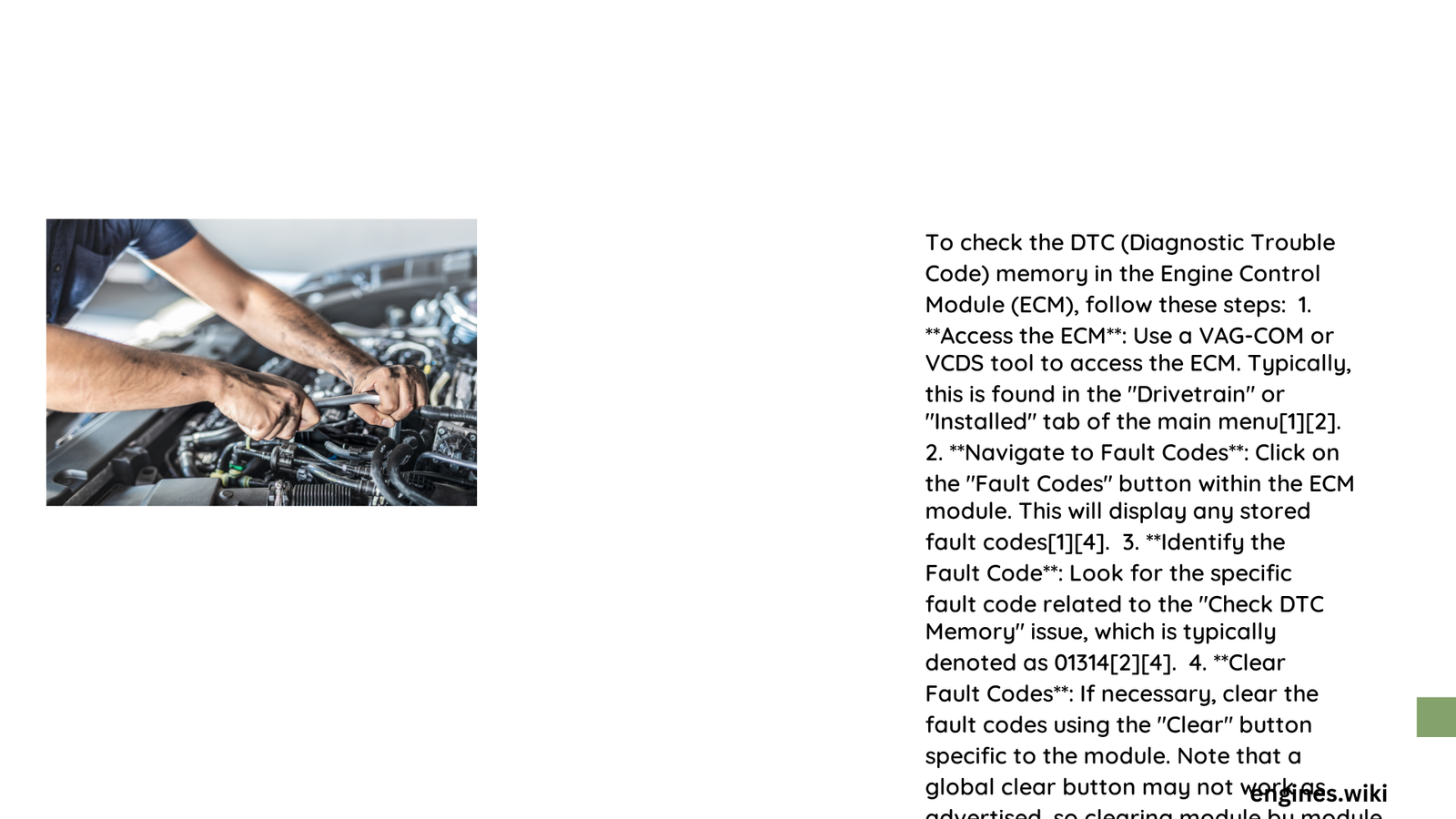Modern vehicle diagnostics require precise understanding of engine control module (ECM) check and DTC memory retrieval. Automotive technicians and vehicle owners can effectively diagnose complex engine issues by systematically accessing and interpreting diagnostic trouble codes (DTCs) through specialized scanning tools. This comprehensive guide provides professional-level insights into navigating ECM diagnostics, ensuring accurate problem identification and resolution.
What Are Diagnostic Trouble Codes?
Diagnostic Trouble Codes (DTCs) are standardized error messages generated by a vehicle’s onboard computer system to indicate specific mechanical or electrical problems. These codes serve as critical communication tools between the vehicle’s complex electronic systems and diagnostic professionals.
Types of Diagnostic Trouble Codes
| Code Category | Description | Example |
|---|---|---|
| P-Codes | Powertrain System Codes | P0601: Internal Control Module Memory Error |
| C-Codes | Chassis System Codes | C0035: Left Front Wheel Speed Sensor Circuit |
| B-Codes | Body System Codes | B0028: Driver Airbag Deployment |
| U-Codes | Network Communication Codes | U0100: Lost Communication with ECM |
How to Prepare for ECM Diagnostic Scan?

Required Tools and Equipment
- OBD-II Scan Tool
- Basic models: $20 – $100
- Professional-grade tools: $500 – $2,000
-
Compatibility with specific vehicle makes/models
-
Diagnostic Procedure Checklist
- Verify vehicle ignition status
- Ensure stable battery voltage
- Select appropriate scan tool protocol
What Steps Involve ECM DTC Memory Check?
Detailed Scanning Procedure
Connection and Initialization
- Locate OBD-II port (typically under steering column)
- Connect scan tool securely
- Power on vehicle’s electrical system
- Select vehicle make/model on scan tool
Code Retrieval Process
- Activate diagnostic mode
- Request DTC memory scan
- Wait for system response
- Record all retrieved codes
- Note freeze frame data for comprehensive analysis
What Factors Influence DTC Accuracy?
Critical Diagnostic Considerations
- Environmental Conditions
- Temperature variations
- Electrical system stability
-
Sensor performance
-
Vehicle-Specific Variables
- Age of vehicle
- Maintenance history
- Previous repair interventions
How to Interpret Complex DTCs?
Advanced Diagnostic Strategies
- Cross-reference manufacturer-specific code definitions
- Analyze freeze frame data
- Consider potential interconnected system failures
- Evaluate historical performance patterns
What Are Common Diagnostic Challenges?
Potential Scanning Limitations
- Intermittent fault detection
- Complex electrical system interactions
- Limited scan tool capabilities
- Manufacturer-specific diagnostic protocols
Best Practices for Effective Diagnostics
Professional Recommendations
- Use high-quality, updated scan tools
- Maintain systematic diagnostic approach
- Document all retrieved information
- Verify repairs after code clearing
- Understand manufacturer-specific nuances
Technical Insights and Recommendations
Expert-Level Diagnostic Approach
- Utilize advanced diagnostic techniques
- Invest in continuous professional training
- Understand emerging automotive technologies
- Develop comprehensive troubleshooting methodologies
Recommended Diagnostic Workflow
- Initial code retrieval
- Comprehensive system analysis
- Targeted component testing
- Verification of repair effectiveness
- Final system validation
Conclusion
Mastering engine control module check and DTC memory retrieval requires technical expertise, specialized tools, and systematic approach. Continuous learning and adaptability remain crucial in navigating evolving automotive diagnostic technologies.
